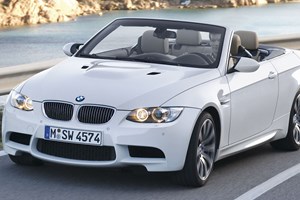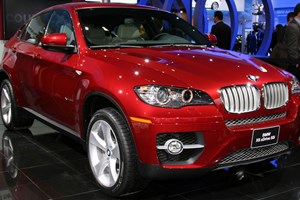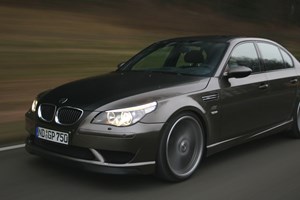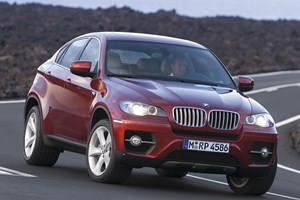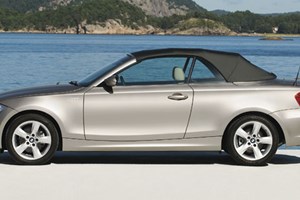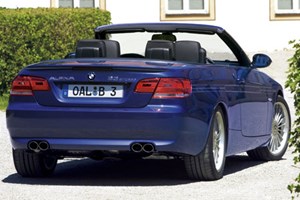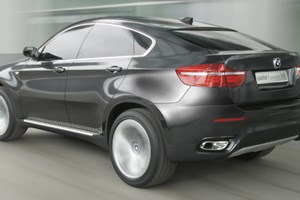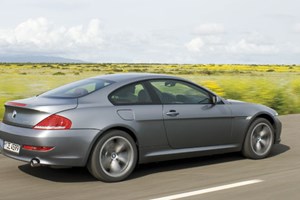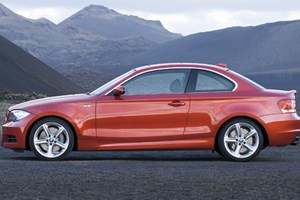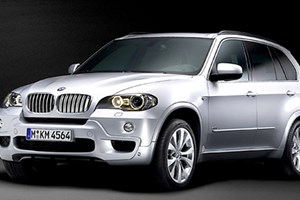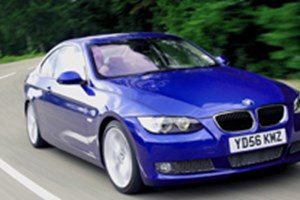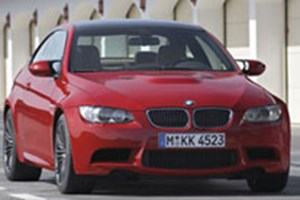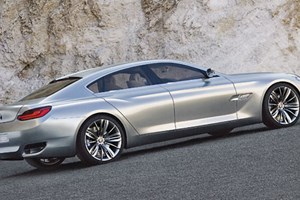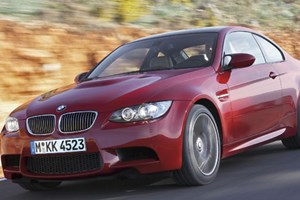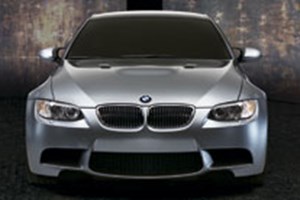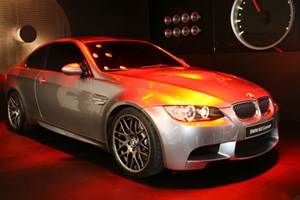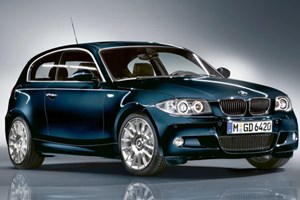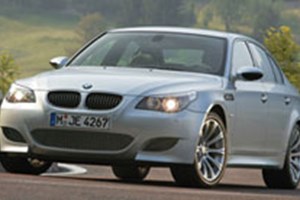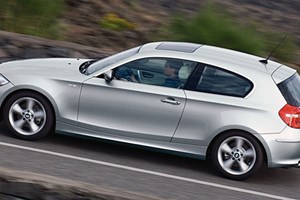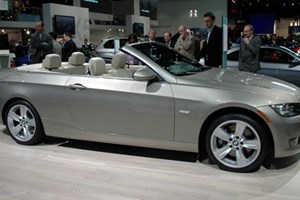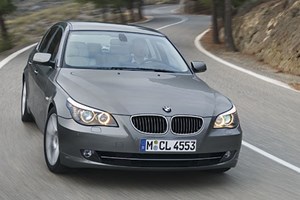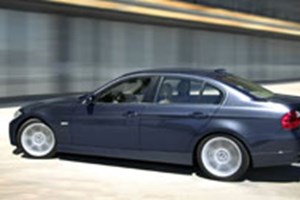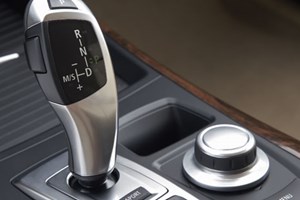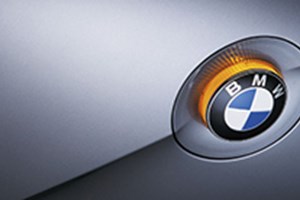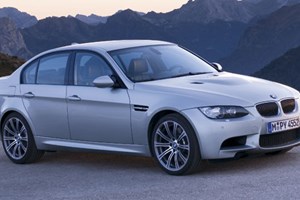
By Steve Moody
First official pictures
24 October 2007 02:47
Two World Debuts at Tokyo: Are BMW turning Japanese?
With the vast proliferation of BMW models, there just aren’t enough motor shows to go round, so Tokyo was treated to the unusual sight of two world debuts from the Germans: the outwardly sensible (but mental behind its closed four doors) M3 and the mental-in-every-way Concept 1 Series tii. The Concept 1 Series tii, BMW executives were extremely keen to point out, is a design study intended to highlight the new coupe’s links to great road and racing BMWs of the past, such as the 2002 tii of the 60s and 70s and the brilliant 3.0 CSL of the 70s. So designers have taken lots of cues from those cars, Max Powering their own standard car before it has even gone on sale. Now that’s keen. However, as with all design studies, if there were certain elements of the car that show visitors really loved, they may well find them sneaking onto options lists...
So what should we be imploring BMW to offer us?
Best start with the exterior. Most obvious are the carbon components such as the bonnet, the mirror caps, and the inlays for the front air intakes at the side. These changes make the car a ‘lot’ lighter than a standard 135i apparently, but there aren’t any figures for weight, or performance enhancement. Shame. The there are the air guidance strips extending along the outer edges of the bonnet to give the car more stability at speed, just like the mid-1970s 3.0 CSL batmobile. A chest wig for cars, but ace nonetheless. The concept also gets a specially designed front air dam, sidesills and rear air dam for improved aerodynamics, while special gurney flaps on the boot generate additional downforce on the rear axle. The inlay in the rear bumper is made of carbon-fibre-reinforced plastic, with a diffuser split by two bars to ensure a controlled flow of air also along the lower part of the car, reducing air swirl at the rear to a minimum, so BMW says. And in case you’ve not noticed, some racy stripes, too.
And what's it like inside then?
It's Alcantara World in here. The dash, steering wheel, gearknob and Recaro seats all get the Alcantara treatment, while the dash, transmission tunnel, door handle and steering wheel inlays are a rather fetching white which doesn’t look half as bad as it sounds. There is also a white face of the rev counter with red indicators. It’s a car that is so in your face it’s halfway up your nostrils, but as a study of what a loud BMW could look like, it’s a success. More please.
And talking of in your face, here’s the ‘sensible’ M3...
Yes, the M3 for those who rather not make a fuss. For pretty much the last decade we’ve had to shoehorn bodies into the back of two-door M3s but with the new model – and no doubt casting a keen eye over sales of all those RS4 and C63 saloons – BMW has decided the world needs a slightly more practical M3 after all. There will definitely be a convertible, too, but executives at Tokyo were adopting an inscrutable countenance at any mention of the Touring. We can't help thinking that the success of Audi’s hot Avants, the strategy must change - especially with the Touring version of the M5. Apart from the obvious door count change, most of the M3 recipe stays the same. So that means the 4.0-litre V8 with 414bhp peak power at 8300rpm like the coupe. Torque is 295lb ft like the coupe while BMW claims 22.8mpg, like the coupe. Everything else that really matters is present and correct. So you get the M-differential, switchable engine mapping, electronic dampers and switchable steering, like the coupe. Oh, and intriguingly, the front end is also like the coupe's. Looks a lot better, doesn't it?
And what's it like inside then?
It's Alcantara World in here. The dash, steering wheel, gearknob and Recaro seats all get the Alcantara treatment, while the dash, transmission tunnel, door handle and steering wheel inlays are a rather fetching white which doesn’t look half as bad as it sounds. There is also a white face of the rev counter with red indicators. It’s a car that is so in your face it’s halfway up your nostrils, but as a study of what a loud BMW could look like, it’s a success. More please.
And talking of in your face, here’s the ‘sensible’ M3...
Yes, the M3 for those who rather not make a fuss. For pretty much the last decade we’ve had to shoehorn bodies into the back of two-door M3s but with the new model – and no doubt casting a keen eye over sales of all those RS4 and C63 saloons – BMW has decided the world needs a slightly more practical M3 after all. There will definitely be a convertible, too, but executives at Tokyo were adopting an inscrutable countenance at any mention of the Touring. We can't help thinking that the success of Audi’s hot Avants, the strategy must change - especially with the Touring version of the M5. Apart from the obvious door count change, most of the M3 recipe stays the same. So that means the 4.0-litre V8 with 414bhp peak power at 8300rpm like the coupe. Torque is 295lb ft like the coupe while BMW claims 22.8mpg, like the coupe. Everything else that really matters is present and correct. So you get the M-differential, switchable engine mapping, electronic dampers and switchable steering, like the coupe. Oh, and intriguingly, the front end is also like the coupe's. Looks a lot better, doesn't it? And what's it like inside then?
It's Alcantara World in here. The dash, steering wheel, gearknob and Recaro seats all get the Alcantara treatment, while the dash, transmission tunnel, door handle and steering wheel inlays are a rather fetching white which doesn’t look half as bad as it sounds. There is also a white face of the rev counter with red indicators. It’s a car that is so in your face it’s halfway up your nostrils, but as a study of what a loud BMW could look like, it’s a success. More please.
And talking of in your face, here’s the ‘sensible’ M3...
Yes, the M3 for those who rather not make a fuss. For pretty much the last decade we’ve had to shoehorn bodies into the back of two-door M3s but with the new model – and no doubt casting a keen eye over sales of all those RS4 and C63 saloons – BMW has decided the world needs a slightly more practical M3 after all. There will definitely be a convertible, too, but executives at Tokyo were adopting an inscrutable countenance at any mention of the Touring. We can't help thinking that the success of Audi’s hot Avants, the strategy must change - especially with the Touring version of the M5. Apart from the obvious door count change, most of the M3 recipe stays the same. So that means the 4.0-litre V8 with 414bhp peak power at 8300rpm like the coupe. Torque is 295lb ft like the coupe while BMW claims 22.8mpg, like the coupe. Everything else that really matters is present and correct. So you get the M-differential, switchable engine mapping, electronic dampers and switchable steering, like the coupe. Oh, and intriguingly, the front end is also like the coupe's. Looks a lot better, doesn't it?
Anything else different?
Apart from the hardly useable ‘fifth’ seat, the four-door is slightly heavier. At 1680kg, it’s a barely noticeable 25kg heavier, which when you consider it’s got two extra doors and a steel roof makes you wonder what the fuss about the weight-saving carbon lid of the coupe is all about. The 0-62mph time leaps by a tenth of second as result, to 4.9 seconds. Yes the roof is steel, and executives say it is merely because the type of buyer looking for the extra doors is less likely to want such a flashy frippery. It doesn’t have anything to with bodyshell stiffness because of the extra holes cut out, they claim. The other difference is the price. In Germany, the saloon will be €1900 cheaper than the coupe, so expect that to equate to £1200 in the UK, or just over £49,000.
